After launching themselves from a branch, paradise tree snakes flatten their bodies into a wing shape and ‘snake’ through the air, gliding between trees up to 30 metres apart!
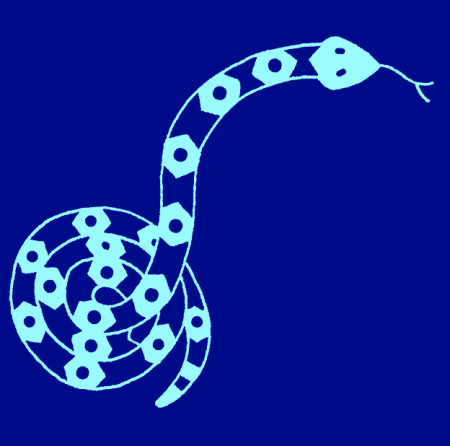
Flying snake!
Post Comment

After launching themselves from a branch, paradise tree snakes flatten their bodies into a wing shape and ‘snake’ through the air, gliding between trees up to 30 metres apart!
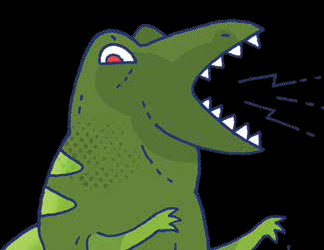
Scientist think that large pterosaurs, like the giant Quetzalcoatlus, probably took off by leaping into the air from all four limbs. These animals were so enormous that if they only used their back legs to take off, like a bird, their thigh bones would have snapped!
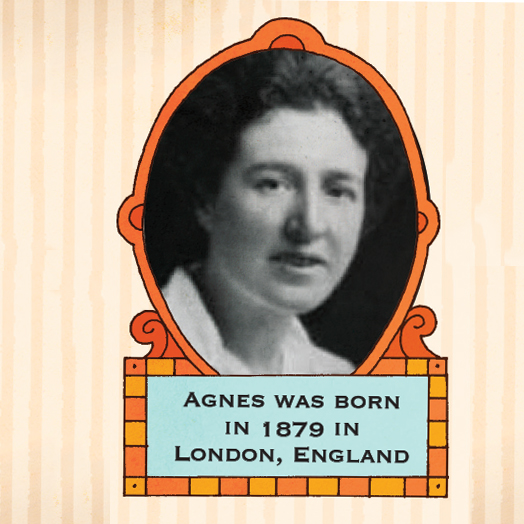
Each month we celebrate a sensational scientist from history; an eminent figure in the creation, invention or discovery of a scientific breakthrough. How many famous scientists can you name? How many of those are women? Female scientists were often forgotten or unknown, simply because they were women. And yet their work was instrumental in discovering hugely important scientific breakthroughs.
Inside Whizz Pop Bang magazine your kids will discover the historic world of science; who invented computers, who discovered the milky way and who is responsible for how we forecast the weather. We tell the story of these fascinating scientists, both male and female, and how they came to discover incredible things.
A few examples of the less well-known women we’ve featured: Lise Meitner, whose work led to the discovery of nuclear fission, astronomer Caroline Herschel and Agnes Arber, botanist and early ambassador in helping the world to recognize the amazing talent of women in science. Read the full list of sensational scientists below.

List of the sensational scientists featured in Whizz Pop Bang magazine:
Issue 1: Mary Anning
Issue 2: Charles Darwin
Issue 3: Maria Telkes
Issue 4: Leonardo da Vinci
Issue 5: Lise Meitner
Issue 6: Louis Pasteur
Issue 7: Rosalind Franklin
Issue 8: Antoine Lavoisier
Issue 9: Mary Somerville
Issue 10: Charles Lyell
Issue 11: Caroline Herschel
Issue 12: Jacques Cousteau
Issue 13: Grace Hopper
Issue 14: Roy Chapman Andrews
Issue 15: William Henry Perkin
Issue 16: Isambard Kingdom Brunel
Issue 17: Florence Nightingale
Issue 18: Albert Einstein
Issue 19: Gregor Mendel
Issue 20: Rachel Carson
Issue 21: Ibn al Haytham
Issue 22: Richard Feynman
Issue 23: Agnes Arber
Issue 24: Alfred Wegener
Issue 25: Jeanne Villepreux-Power
Issue 26: George de Mestral, velcro
Issue 27: Marie Curie
Issue 28: Nicolaus Copernicus
Issue 29: Hedy Lamarr
Issue 30: Archimedes
Issue 31: Anselmus De Boot
Issue 32: Joseph Bazalgette
Issue 33: Charles Darwin
Issue 34: Michael Faraday
Issue 35: Gerty Cori
To buy a back issue for just £3.75 (with free UK delivery!) visit our shop.
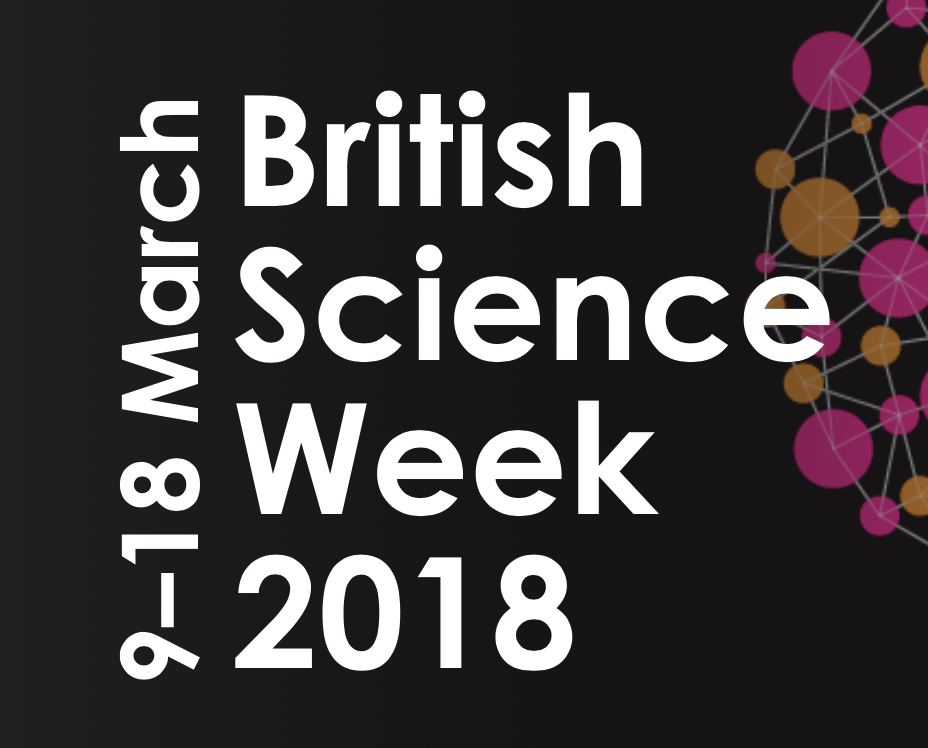
British Science Week is a ten-day celebration of science, technology, engineering and maths for kids, families and schools everywhere. Get inspired and join millions of mini scientists experimenting and having fun learning about the awesome world of science.
We’ve got loads of ideas to bring science week to life in your school, so let’s get started. You will need your Whizz Pop Bang magazines (not a subscriber? Order back issues here at £3.75 per mag including delivery) and access to a colour photocopier.
This idea came from primary science teachers Kathryn Horan and Toby Tyler. Every week a couple of the children in the class take home a Whizz Pop Bang magazine to share with their families.
For this you will need a scrapbook and a plastic wallet for each magazine. Prepare an instruction sheet to go with each one:
Welcome to our Whizz Pop Bang scrapbook!
There are no specific rules about what you should do with the magazine, you could…
Whatever you do, we’d love to hear about it at school, so be sure to let us know or add something into the scrapbook. Have fun!
Cover the classroom in posters of inspirational, sensational scientists! In every issue of Whizz Pop Bang there’s a double-page spread focusing on famous scientists who made history with their discoveries and inventions. Photocopy the spreads and pin up to inspire your pupils!
Find out what real scientists do in their everyday jobs on our interview pages. We’ve interviewed over 30 scientists ready to inspire girls and boys to be our scientists of the future! To buy a back issue visit our back issues shop.
Issue 1: Becky Smith, Chocolate scientist
Issue 2: Karen Ladenheim, Robotics scientist, Stanford University
Issue 3: Lynn Whitfield, Bat ecologist
Issue 4: Dr Steve Brusatte, Palaeontologist, Edinburgh University
Issue 5: Rob Lambert, Antarctic explorer and polar scientist
Issue 6: Tim Peake, Astronaut
Issue 7: Susan Cheyne, Conservation biologist (orangutans)
Issue 8: Misha Lotto, young scientist, Blackawton Bees Project
Issue 9: Josie Campbell, Vet
Issue 10: Shane Cronin, Volcanologist (New Zealand)
Issue 11: Jennifer Andon, Entomologist
Issue 12: Dr Maddalena Bearsi, Marine biologist
Issue 13: Prof Robert Winston, Medical scientist, Imperial College
Issue 14: Sarah Shelley, Fossil hunter
Issue 15: Helen Czerski, Bubble scientist
Issue 16: Abbie Hutty, Mars Rover engineer
Issue 17: Lara Aknin, Psychology professor (gift-giving)
Issue 18: Emma Burke, Penguin aquarist
Issue 19: Ian Gilby, Primatologist, Tanzania
Issue 20: Caoimhe Doyle, Foley Artist, sound effect engineer
Issue 21: Amy Dejong, Food scientist, University of Wisconsin
Issue 22: Payton Barnwell, Nanotechnologist, Florida Polytechnic Uni
Issue 23: Dave Goulson, Bumblebee biologist
Issue 24: Huw James, Science adventurer
Issue 25: Alex Hildred, Maritime archaeologist
Issue 26: Cierra Martin, Seed guardian
Issue 27: Toby Gemmill, Orthopaedic vet
Issue 28: Dr Sheyna, Martian (sort of)
Issue 29: Richard Stammers, Visual effects artist
Issue 30: Andres Ruzo, Geothermal Scientist
Issue 31: Lisa Elser, Gem cutter
To buy a back issue (for just £3.75 inc delivery) visit our back issues shop.
Every issue of Whizz Pop Bang science magazine looks at 10 awesomely amazing things on that month’s topic. Looking at engineering as part of the year of engineering? Take a look at ENGINEERING EXTRAVAGANZA (issue 16) with 10 Awesomely Amazing bizarre buildings, including a toilet-shaped building in Korea! Studying the human body? Check out SPECTACULAR SKELETONS (issue 27) and the 10 Awesomely Amazing bionic body parts, from 3D printed prosthetic hands to ancient Egyptian artificial toes. Is your topic plants this term? Kids love reading about the 10 Awesomely Amazing harvests from around the world in our SUPER SEEDS (issue 26), did you know there are chillies that melt latex gloves?
All Whizz Pop Bang magazines are packed full of science puzzles and a quiz to test your pupil’s science knowledge. There are also word searches, jokes, riddles and brain teasers for every age and ability. Turn wet play into a festival of science fun and games!
There are hundreds of simple hands-on science experiments and activities in Whizz Pop Bang magazine, and for each one we outline what you need, what to do, and you will find making it ideal for primary school teachers who may not have a science background. Perfect for curious kids and teachers looking for simple science ideas! Check out our bulk discounts for schools here and celebrate British Science Week 2018 with a Whizz, Pop and a Bang!
What is The Great Science Share?
Following on from British Science Week there are several events going on around the UK. Use these ideas for your Great Science Share; a national campaign to engage young people in sharing science with new audiences.
PIONEERED IN MANCHESTER – MAKING A DIFFERENCE UK-WIDE
You can get involved as a School, STEM Educator, STEM Organisation and Business.
Features include:
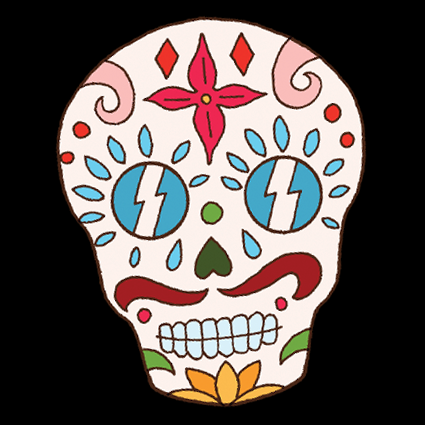
Buy this issue here and get crafting some seriously spooky stuff ready for Halloween ?
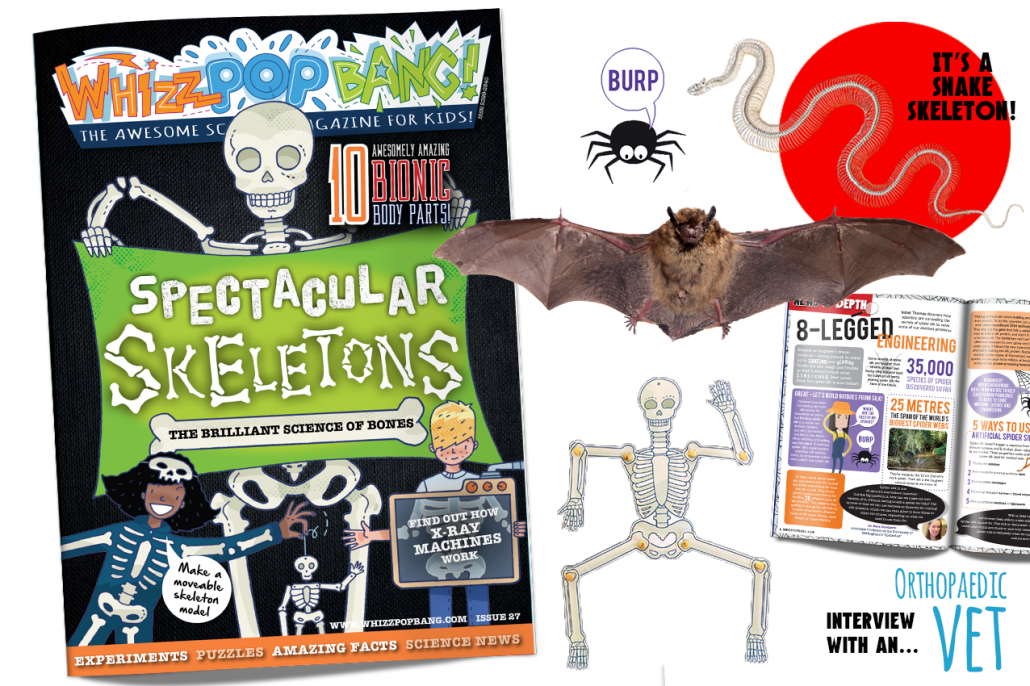
Activities included in this issue: make a ball and socket joint, bend a real bone, make a bendy back bone, make a moveable skeleton, craft an x-ray machine and make a Halloween skull mask. Loads of awesome science fun for kids!
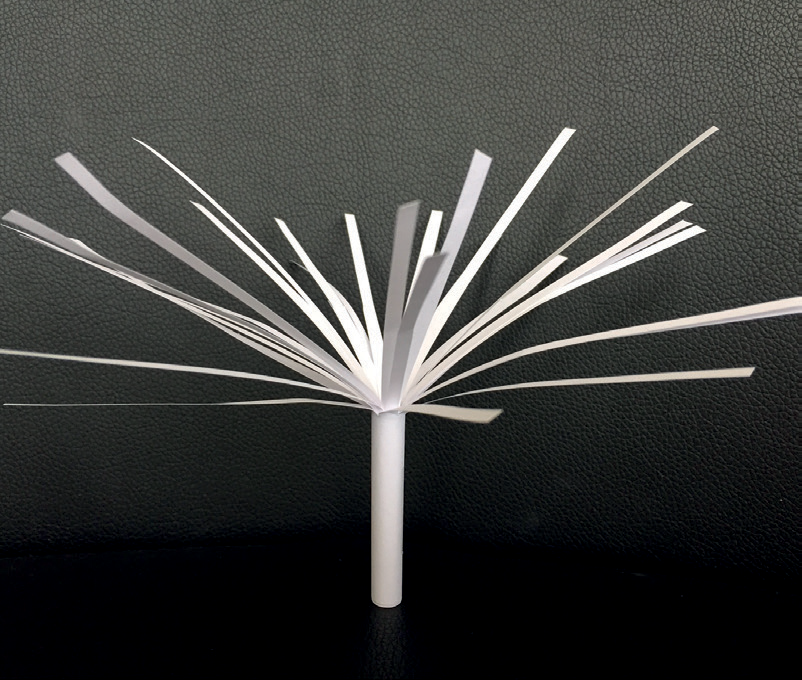
Follow the ingenious journeys of seeds with our SUPER SEEDS issue! Learn about seed dispersal with our simple experiments and activities, like this dandelion model test to show just how far seeds can travel.
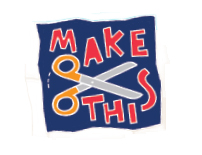
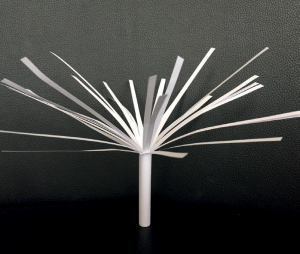
You will need:
What you do:
You should find:
You’ve made a model dandelion seed! Try dropping it from a height as a test flight. Throw it upwards into a strong wind and see how far it will go.
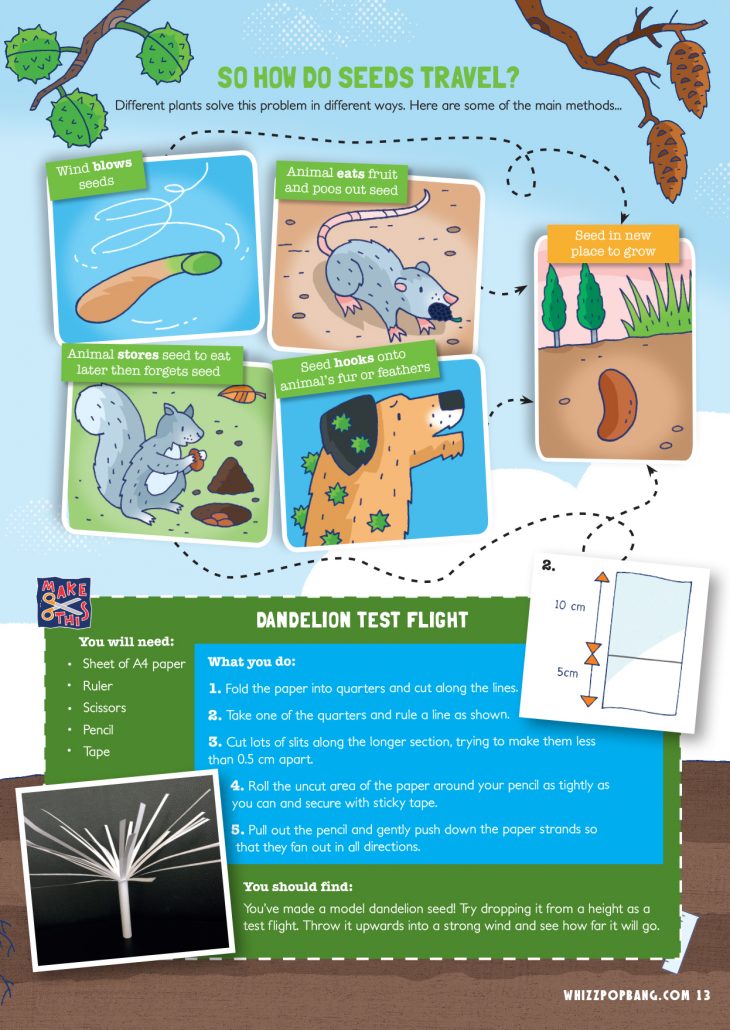
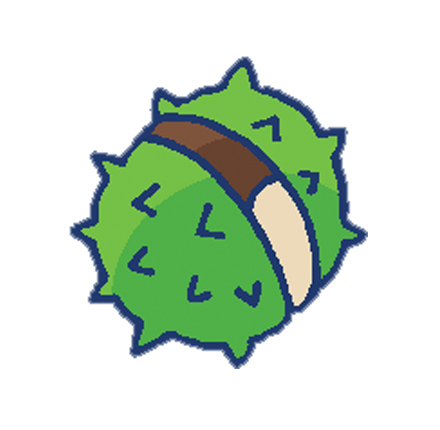
In this issue we go mad for conkers and pine cones with fun hands-on science activities to learn all about how seeds spread. Everyone wants a bit of distance from their parents from time to time, but since seeds can’t move, they instead rely on cunning techniques to find their own patch of ground. Imagine being fired away from your parent in a green slimy liquid! Yes, this issue we’re looking at seed dispersal – you can try modelling dandelion seeds, making your own pinecone bird feeders and experimenting with a sycamore seed heli-spinner. Find out about the history of the invention of Velcro, which was inspired by nature’s own burs and take a peek inside a top-secret seed bank buried deep inside an arctic mountain. Happy experimenting kids!
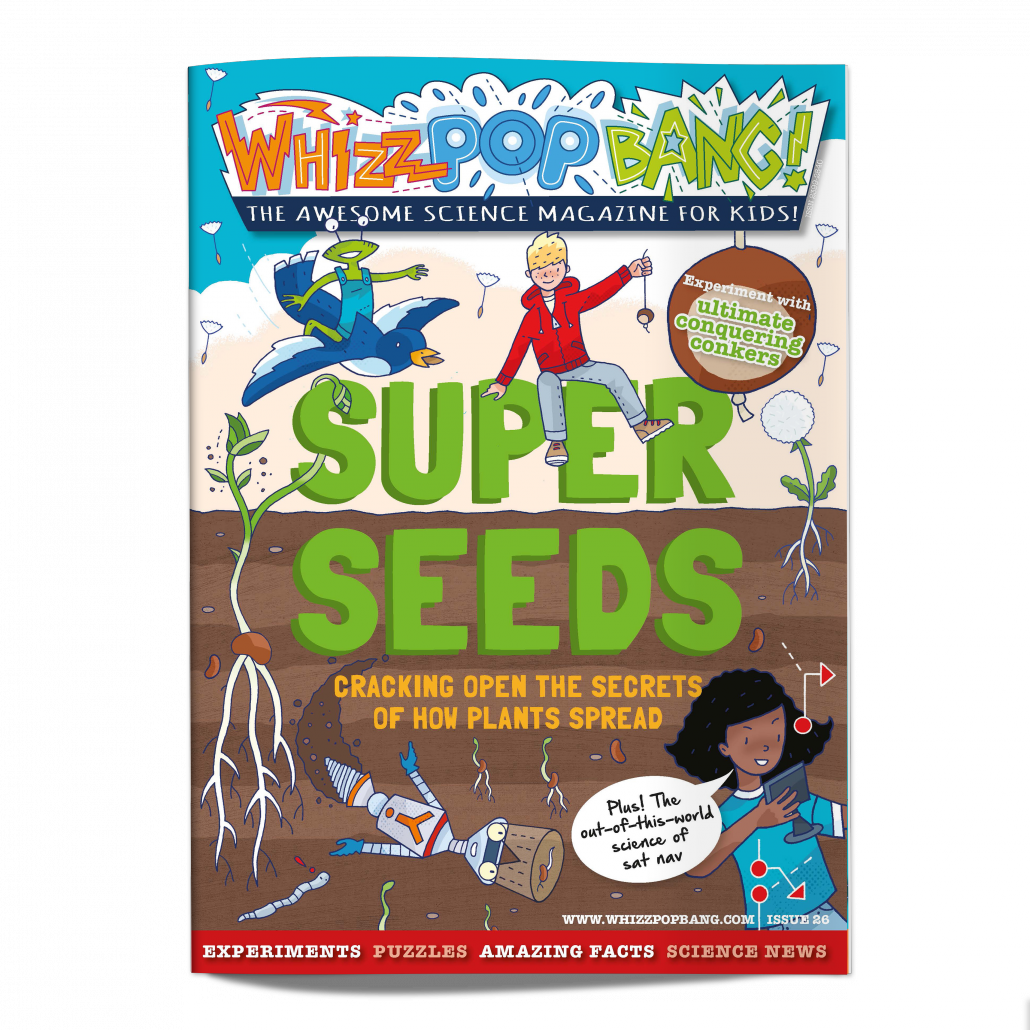
Not a subscriber? Click here to start a monthly subscription from just £2.92 a month with FREE Uk delivery.
Buy this SUPER SEEDS single issue in our online shop packed full of all our super science magazines and bundles!

We’re supporting this awesome campaign called Kids Against Plastic to help tackle the huge problem of plastic waste. Download this FREE activity pack and learn how to be kids against plastic!
As part of the Great Science Share, we put together this interactive activity pack for teachers to use in class to show kids what we can all do to reduce the amount of plastic we use. Whether you’re a teacher, a Brownie or Scout leader, grandparent or parent, the Kids Against Plastic campaign is for everyone to learn how to help in the fight against our reliance on plastic.
Click on the image below, download the pack and watch Ella and Amy tell you more… and don’t forget to join in with their mission to collect 100,000 pieces of plastic!
Features include: